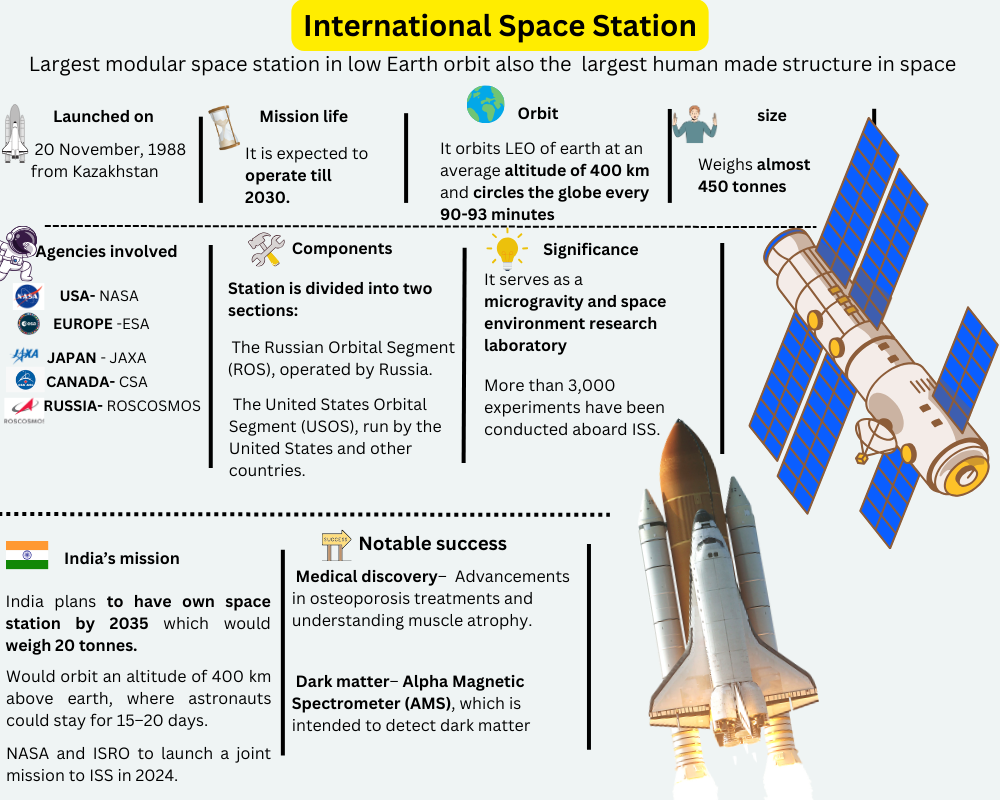India to have its own space station by 2035
Why In News?
In his speech at the Vikram Sarabhai Space Centre (VSSC) in Thiruvananthapuram, Prime Minister Narendra Modi announced India’s intention to build its own space station by 2035 and send a human being to the moon by 2040. India is taking a bold step forward in space exploration.
What is a space station?
A space station is a spacecraft engineered to endure extended periods in space, facilitating the docking of other spacecraft and accommodating crew members.
The most renowned example is the International Space Station (ISS).
International Space Station (ISS)
The ISS is a human-made spacecraft that provides a habitable environment for astronauts in space. Stationed in low-earth orbit, it is home to astronauts conducting a multitude of experiments in various fields such as earth science, biology, biotechnology, astronomy, microgravity, meteorology, and physics.

India’s Space Station:
- The Indian Orbital Space Station, also called “Bharatiya Antariksha Station” is a planned modular space station to be constructed by India and operated by the Indian Space Research Organisation (ISRO). The space station would weigh 20 tonnes and maintain an orbit of approximately 400 kilometres above the Earth, where astronauts could stay for 15-20 days.
- Originally planned to be completed by 2030, it was later postponed to 2035 due to delays caused by technical issues related with the Gaganyaan crewed spaceflight mission and the COVID-19 pandemic in India.
- The first module is expected to be launched in 2028 on an LVM3 launch vehicle, with the remaining modules to be launched by 2035 on the Next Generation Launch Vehicle.
Achievements of India in Space research:
Moon Missions: | The Department of Space has been tasked with developing a roadmap for Moon exploration, including a series of Chandrayaan missions. The next Chandrayaan mission will likely bring Moon samples back, eventually leading the first Indian to the Moon by 2040. |
Mars Missions: | India has already sent an orbiter. The next step would be to send a lander, which the US and China have already achieved. |
Solar Missions: | The Aditya-L1 mission is an Indian solar observatory at Lagrangian point L1 for “Observing and understanding the chromospheric and coronal dynamics of the Sun” in a continuous manner. |
Benefits to India setting up its own space station:

Expected Prelims Question:
Consider the following statements regarding international space station (ISS):
- Astronauts float in the space station because there is no gravity.
- The International space station is forever in a free fall towards the Earth.
Which of the above statements is/are correct?
- 1 only
- 2 only
- Both 1 and 2
- Neither 1 nor 2
